Skin penetration of terpenes
Pharmaceutical Technology Europe
Terpenes are widely used in topical preparations. This paper focuses on the skin penetration of terpenes depending on their physicochemical properties and influence of the type of dermatological vehicle that was used. The structure of human skin and the skin penetration process is also briefly described.
Skin is a barrier protecting the organism against physical, chemical and biological agents, and mechanical injuries.1–3 This organ maintains equilibrium between the organism and the external environment. The skin consists of the epidermis with the stratum corneum (SC) and the dermis (Figure 1).
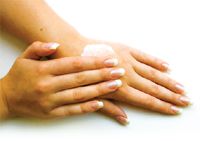
The dermis is about 0.5–2 mm thick,1,3,4 and is composed of collagen fibres and a small amount of elastin. It contains connective cells, capillaries, nervous ends and appendages, such as hair follicles and sweat ducts. The deeper subcutaneous layer mainly consists of fat lobules.
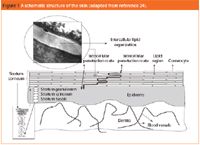
Figure 1 A schematic structure of the skin (adapted from reference 24).
The dermis connects with the epidermis via the stratum basale.1,3,4 The epidermis consists of keratinocytes, arranged in layers. As a result of the keratinization process the region of dead cells (SC) is formed. Because keratinocytes of the SC are cornified, they are also termed 'corneocytes', which are filled with the protein α-keratin.2–4 The SC comprises 15–20 layers of corneocytes. The water content in the SC is 10-80%. The SC thickness depends on the hydration level, but is usually 10–100 μm.
Intercellular spaces of the SC are filled with lipids arranged into ordered laminar structures, where the fundamental unit is the lipid bilayer.1–4 SC lipids are primarily ceramides, cholesterol and its esters, fatty acids and triglycerides. Hydrophilic polar groups (heads) of lipids are directed to each other and a monomolecular aqueous layer appears between them. (Figure 2).
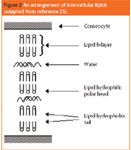
Figure 2 An arrangement of intercellular lipids (adapted from reference 25).
Blood vessels, coming across the dermis and reaching up to the border with the stratum basale, deliver oxygen and nutrients to the skin, and remove toxins and metabolites.2–4 These vessels also deliver substances that permeated the SC barrier directly to the blood circulation.
Skin penetration process
The ability of xenobiotics to permeate through the skin depends on the following two processes:
- the substance in the dissolved form must be released from the carrier
- then it must overcome a skin barrier.1,3
Both processes are closely related and depend on the physicochemical properties of the penetrant, the type of carrier and the penetration pathway.
There are two skin penetration pathways for the exogenous substances: the transepidermal route through the skin cells and the transfollicular route through the skin appendages.1,3 The transfollicular route has little significance because the appendages of the skin occupy less than 1% of the total skin surface, and the penetration can be moderated by the secretive activity of the appendages.The principal pathway for the skin penetration of xenobiotics is the transepidermal route.1,3
In the protein hydrogel of the viable skin layers (epidermis and dermis [ED]) the penetration rate can be considered as a constant and unlimited. These layers do not influence the rate of the penetration process and the permeated amounts.
The real barrier for the skin penetration is the dead SC layer. The substance permeates this layer mostly via a tortuous intercellular lipid pathway (Figures 1 and 2).
The accurate arrangement of corneocytes and the laminar arrangement of lipids enclosed between them caused a thousand times slower permeation through the SC layer than through the ED. The lipophilic character of the SC favours the penetration of nonpolar, un-ionized and lipophilic substances (the optimum range of log P value for skin penetration is 2–4) with the low molecular mass. The absorption of more lipophilic compounds (with log P value >4) can be limited by hydrophilic properties of deeper-situated viable skin layers.
Skin penetration process study
Considering skin penetration as passive diffusion through the dead SC, it can be assumed that this process will proceed similarly both in ex vivo and in vivo conditions, and possible differences can result only from a different hydration level of the SC.1,3
Practically, in ex vivo studies, human cadaver skin or skin obtained from a surgical operation is used. Depending on the character of the experiment, the full skin or isolated skin layer is placed as a barrier in a diffusion cell between the donor and acceptor compartment. Acceptor fluid flows beneath the barrier.
The acceptor fluid should provide sink conditions that normally occur in vivo — the solubility of the penetrant in the acceptor fluid does not limit release from the carrier or penetration rate. To obtain the constant and the maximum diffusion rate, application of penetrant in 'infinite dose' is used, which means that despite the diffusion process, the amount of the penetrant remaining in the carrier is so large that it does not influence the penetration rate.
To obtain the sink condition the biphasic acceptor system can be used when the solubility of penetrant in aqueous acceptor fluid is limited.5 Such an acceptor can be composed with, for example, an isotonic phosphate buffer pH 7.3 and an immiscible organic solvent, such as dichloromethane.
Only the aqueous phase is in contact with the barrier. Penetrant dissolved in the aqueous phase of the acceptor system will diffuse, according to the partition coefficient rule, into the organic phase. The schematic diagram of equipment used for the ex vivo study of penetration of terpenes is presented in Figure 3.
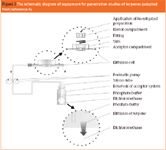
Figure 3 The schematic diagram of equipment for penetration studies of terpenes (adapted from reference 5).
In the ex vivo study, the amount of penetrated substance is determined in acceptor fluid and/or in the barrier.1,3,6 When the full skin is used as a barrier, the separation of skin layers after the end of the experiment can be performed using a tape-stripping technique.7,8
This method consists of collecting the SC layer adhered to the serial fragments of an adhesive tape. A tape-stripping technique is also used in vivo in bioequivalence studies for topically applied medicines because it provides concentration–depth profiles for the drug in the SC. The amounts of the penetrant in the tape-strips are assayed, and the data obtained can then be used to estimate pharmacokinetics parameters.3 The detailed procedures and limitations concerning the tape-stripping technique are described in FDA and OECD guidances.
Characteristics of terpenes
Terpenes are a large group of natural compounds deriving from active isoprene.9 The number of carbon atoms in the terpene molecule is a multiple of 5; for example, C10 (monoterpenes), C15 (sesquiterpenes) and C20 (diterpenes). They are also the main constituents of essential oils — the active substances of many plants.
Essential oils and/or terpenes are present in the majority of cosmetics,10 and in over several hundred medicines. Most are intended for topical treatment or, after spreading, inhalation. They can be solutions, ointments, emulsions, balms, gels, lotions or solutions.
Terpenes have a very broad spectrum of biological activity, which in essential oils is an effect of synergistic or antagonistic activity of each component. Topical preparations containing terpenes exhibit antibacterial, rubefacient, mild-analgesic and anti-inflammatory activity.
Terpinen-4-ol, derived from tea tree oil, is topically applied to treat bacterial, fungal and viral infection, and psoriasis and dermatitis. It is also a compound of insect repellents. Linalool, derived from lavender oil, is one the most frequently used fragrances. It was estimated that linalool is present in 60–90% of some types of cosmetics.10
In the experimental dermopharmacy and technology of drug forms, terpenes are intensively explored as penetration enhancers —auxiliary compounds reversibly changing the structure of the SC, which leads to the increased permeability of the skin.11,12 The enhancement of the skin penetration of the actives is also explained as a result of increased drug solubility in the SC treated with terpenes. In commercial preparations, terpenes are often used to increase penetration of nonsteroidal anti-inflammatory drugs.
Terpenes are commonly regarded as nontoxic. However, because of their very broad biological activity side-effects (mainly allergenic and irritation reactions) cannot be excluded.10,13–16 This is why skin penetration of terpenes should be determined.
Physicochemical properties
For the skin penetration study both acyclic monoterpenes: (±)-β-citronellol, (±)-linalool, linalyl acetate and cyclic-type monoterpenes: (-)-α-pinene, (-)-β-pinene, eucalyptol and terpinen-4-ol were chosen.
All investigated compounds appear in the liquid state at room temperature. Considering their structure, the investigated terpenes represent different chemical classes: (-)-α-pinene and (-)-β-pinene are hydrocarbons; (±)-β-citronellol, (±)-linalool and terpinen-4-ol are alcohols; linalyl acetate is an ester and eucalyptol is an oxide.
Based on aqueous solubility, the penetrants investigated can be grouped as follows: well-soluble acyclic and cyclic alcoholic-type terpenes (>1 mg/mL) — (±)-linalool, eucalyptol and terpinen-4-ol; poorly soluble acyclic and cyclic ester and hydrocarbon-type terpenes (>0.1 mg/mL) — linalyl acetate, (-)-α-pinene, (-)-β-pinene; and a medium-soluble acyclic alcoholic-type terpene — (±)-β-citronellol (0.1–1.0 mg/mL).13 Four terpenes, namely (±)-β-citronellol, (±)-linalool, eucalyptol and terpinen-4-ol, have log P value optimum for skin penetration (in the range 2–4). The more detailed characteristics of investigated terpenes were described earlier.17
For interpretative aims the investigated terpenes can be grouped as follows:
- Acyclic with log P value ²3: (±)-β-ci-ronellol and (±)-linalool.
- Acyclic with log P >4: linalyl acetate.
- Cyclic with log P ²3: eucalyptol and terpinen-4-ol.
- Cyclic with log P >4: (-)-α-pinene and (-)-β-pinene.
Ex vivo skin penetration
Skin penetration of terpenes was determined by their application in pure form for 1, 2 and 4 h onto the human skin placed in flow-through diffusion cell.18,19 The system was maintained at a temperature of 37 ±0.5 °C and the skin was occluded. At the end of experiment the SC was separated using a tape-stripping technique. The collected SC samples, as well as remaining ED, were extracted and the extracts were analysed by gas chromatography (GC).18–20
Figure 4 shows the amounts of penetrants found in the SC and ED after 4 h application. The amounts of terpenes penetrating into the skin are very large. It was in the range from 200–1800μg/cm2 and depends on the type of applied terpene. The total skin penetration of pure terpenes increases in the following order: linalyl acetate, (2)-α-pinene, (2)-β-pinene5eucalyptol, (6)-β-citronellol, terpinen-4-ol, (6)-linalool. Total skin cumulation is similar for acyclic and cyclic terpenes with log P. 4. Among terpenes with log P ²3 total skin absorption is 2–3 times greater for compounds with acyclic structure than those with cyclic structure. Higher skin absorption for oxygenic derivatives (alcohols and oxides) than for ester- and hydrocarbon-type terpenes can be observed.
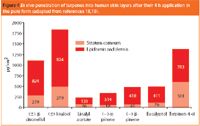
Figure 4 Ex vivo penetration of terpenes into human skin layers after their 4 h application in the pure form (adapted from references 18,19).
Vehicle type and ex vivo skin penetration of terpenes
The application of two terpenes: (±)-linalool and terpinen-4-ol, incorporated singly into commonly used dermatological vehicles (oily solution, hydrogel and oil/water emulsion) allow us to determine the influence of the type of vehicle on the skin penetration process.21
The vehicles used demonstrate different properties. An oily solution is a typical anhydrous vehicle, while hydrogel contains 98% water. Terpenes in oil were completely dissolved whereas only partly dissolved and/or dispersed in the hydrogel.
Emulsion has intermediate properties. In this form the terpenes were most probably present in several forms: dissolved in the oily internal phase, emulsified with the surfactants and forming an internal oily phase, as well as dissolved in surfactant micelles.
The amounts of terpenes penetrated into the SC and ED after 1 h and 4 h of the penetration process are presented in Figure 5. Increased absorption time from 1 h to 4 h resulted in increased amounts of terpenes in skin layers. The greatest total cumulation in the skin was observed when terpenes were applied in hydrogel.

Figure 5 Ex vivo penetration of (±)-linalool (a) and terpinen-4-ol (b) into human skin layers after their application in dermatological vehicles (adapted from reference 21).
This results from the high partition coefficient of the lipophilic terpene molecule between lipophilic SC and the hydrophilic vehicle. Hydrogel and the oily solution favour penetration of terpene with higher aqueous solubility — cumulation of terpinen-4-ol in the skin layers, particularly ED, was greater than culmination of (±)-linalool.
Skin penetration of terpenes applied as an oily solution and an oil/water emulsion were comparable and lower than when applied as hydrogel, mostly because of the unprofitable partition coefficient of penetrants between the SC and the vehicle. For all the preparations investigated the cumulation of terpenes in ED is comparable or greater than in the SC.
Vehicle type and in vivo stratum corneum absorption of terpenes in humans
The in vivo SC penetration was determined for (±)-linalool and terpinen-4-ol incorporated into two vehicles — oily solution and hydrogel.22 The preparations were applied onto the skin of ventral forearms in humans. After 1 h, the SC layer was tape-stripped as in the ex vivo studies. The amounts of terpenes absorbed in the SC are shown in Figure 6.
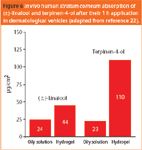
Figure 6 In vivo human stratum corneum absorption of (±)-linalool and terpinen-4-ol after their 1 h application in dermatological vehicles (adapted from reference 22).
The highest SC penetration was observed when terpenes were applied as hydrogel, and the SC absorption of terpinen-4-ol was 2.5 times greater than (±)-linalool. The SC absorption of both terpenes after application in oily solution was similar and 1.8 times smaller for (±)-linalool and 4.8 times for terpinen-4-ol than for hydrogel vehicle.
Comparing in vivo and ex vivo data after 1 h application, higher in vivo than ex vivo SC absorption of (±)-linalool applied in oily solution was noted while the in vivo cumulation of this terpene applied in hydrogel and terpinen-4-ol in oily solution was smaller than ex vivo. The same in vivo and ex vivo SC absorption of terpinen-4-ol administrated in hydrogel was determined.
Conclusions
These results indicate a distinct relationship between skin penetration of terpenes and their physicochemical properties and the type of vehicle used. Current ex vivo and in vivo experimental models are imperfect, therefore, it is difficult to introduce unequivocal advice relating to the use of terpenes in the clinical practice or cosmetology.
The fact that only a small amount of terpenes is necessary for saturation of the SC and that they are able to cumulate in large amounts in the skin layers indicate overcoming the SC barrier by terpenes and possibility of easy in vivo penetration into the blood circulation. Because a higher skin penetration of terpenes from a hydrophilic vehicle was demonstrated, such formulations can cause side-effects more easily.
Conversely, the fast elimination of terpenes from the skin, mainly as a result of evaporation, can reduce the above effects and qualify the safety of the use of terpenes applied in different formulations.18,19,21,22 Nevertheless, in vivo skin elimination of terpenes via further penetration into blood cannot be excluded, particularly under specific conditions of application.23
Krzysztof Cal is assistant professor at the Department of Pharmaceutical Technology, Medical University of Gdansk (Poland).
References
1. R.L. Bronaugh and H.I. Maibach, Percutaneous Absorption (Marcel Dekker, New York, NY, USA, 1999).
2. J. Hadgraft and R.H. Guy, Transdermal Drug Delivery (Marcel Dekker, New York, NY, USA, 1989).
3. A.C. Williams, Transdermal and Topical Drug Delivery (Pharmaceutical Press, London, UK, 2003).
4. D.A. Burns et al., Rook's Textbook of Dermatology (Blackwell Science, Oxford, UK, 2004).
5. K. Cal et al., Int. J. Pharm., 244, 85–92 (2001).
6. M.S. Roberts and K.A. Walters, Dermal Absorption and Toxicity Assessment (Marcel Dekker, New York, NY, USA, 1998).
7. V.P. Shah et al., Pharm. Res., 15, 167–171 (1998).
8. C. Surber et al., J. Toxicol. Cut. Ocular Toxicol., 20, 461–474 (2001).
9. J.B. Harborne et al., Phytochemical Dictionary — A Handbook of Bioactive Compounds From Plants (Taylor and Francis, Philadelphia, PA, USA, 1999).
10. M. Matura et al., Contact Dermatitis, 52, 320–328 (2005).
11. A.C. Williams and B.W. Barry, Pharm. Res., 8, 17–24 (1991).
12. A.C. Williams and B.W. Barry, Adv. Drug Deliv. Rev., 56, 603–618 (2004).
13. K.A. Hammer et al., Food Chem. Toxicol., 44, 616–625 (2006).
14. B.M. Hausen, Dermatitis, 15, 213–214 (2004).
15. S.C. Rastogi et al., Contact Dermatitis, 34, 423–426 (1996).
16. C.M. Schempp et al., Hautarzt, 53, 93–97 (2002).
17. K. Cal, Yakugaku Zasshi, 126, 307–309 (2006).
18. K. Cal and M. Sznitowska, J. Control. Release, 93, 369–376 (2003).
19. K. Cal et al., J. Dermatol. Sci., 41, 137–142 (2006).
20. K. Cal, Planta Med., 72, 311–316 (2006).
21. K. Cal, Arch. Dermatol. Res., 297, 311–315 (2006).
22. K. Cal and M. Krzyzaniak, J. Dermatol. Sci., 42, 265–267 (2006).
23. W. Jager et al., J. Soc. Cosmet. Chem., 43, 49–54 (1992).
24. P.L. Honeywell-Nguyen and J.A. Bouwstra, Drug Discov. Today, 2, 67–74 (2005).
25. P. Buck, Int. J. Aromatherapy, 14, 70–76 (2004).
Drug Solutions Podcast: A Closer Look at mRNA in Oncology and Vaccines
April 30th 2024In this episode fo the Drug Solutions Podcast, etherna’s vice-president of Technology and Innovation, Stefaan De Koker, discusses the merits and challenges of using mRNA as the foundation for therapeutics in oncology as well as for vaccines.
Drug Solutions Podcast: Applying Appropriate Analytics to Drug Development
March 26th 2024In this episode of the Drug Solutions Podcast, Jan Bekker, Vice President of Business Development, Commercial and Technical Operations at BioCina, discusses the latest analytical tools and their applications in the drug development market.
